|
|
|
Sort Order |
|
|
|
Items / Page
|
|
|
|
|
|
|
| Srl | Item |
| 1 |
ID:
118810
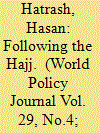

|
|
|
| 2 |
ID:
174141
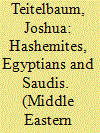

|
|
|
|
|
| Summary/Abstract |
Most analyses of the fate of the Hijaz and the Muslim pilgrimage after the First World War have focused on the struggle between Hashemites and Saudis. But in actuality the Egyptians were heavily involved in this dispute, for the Hijaz had been for centuries part of a geopolitical system based on the Red Sea littoral states. Indeed, this was a tripartite struggle, which afforded much more room for maneuver than a simple bilateral one. This article covers the maneuvers of all three parties, demonstrating how they tried to gain possession of the hajj, and all that meant for world Islamic leadership.
|
|
|
|
|
|
|
|
|
|
|
|
|
|
|
|
| 3 |
ID:
086732
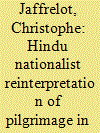

|
|
|
|
|
| Publication |
2009.
|
| Summary/Abstract |
Victor Turner's anthropological reading of pilgrimages in terms of communitas is of utmost relevance in the case of Hinduism: indeed, Hindu pilgrimages produce a relative and temporal obliteration of social cleavages - particularly caste divisions - allowing the emergence of a sense of group belonging. Moreover, the geography of pilgrimage sites maps out the sacred land, marking the area of extension of Hindu civilisation in space. Hindu nationalists have tried to exploit this particular alchemy to offer an ethnic definition of the nation (and its territory) and thereby gather a following by lending some of their demonstrations the appearance of a pilgrimage. This approach asserted itself in the early 1980s thanks to the Ekatmata Yatra (Unity March) in 1983, and was confirmed in 1990 during the Rath Yatra (Chariot festival). Nevertheless, the instrumentalist interpretation of such movements comes up against an issue that is already at the core of subaltern studies' historiography, i.e. that masses do not always mobilise for the reasons put forth by political leaders. More specifically, if women march massively in the streets during these Yatra pilgrimages, it is both because they feel concerned by the reason for demonstrations and because these demonstrations have legitimised their entry into the public space, which still remains relatively closed to them.
|
|
|
|
|
|
|
|
|
|
|
|
|
|
|
|
| 4 |
ID:
153011
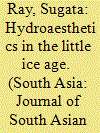

|
|
|
|
|
| Summary/Abstract |
Examining the visual tactics of framing flowing water in landscape painting and riparian architecture in Braj, a pilgrimage centre in North India where the god Krishna is believed to have spent his youth, the essay foregrounds a new conception of hydroaesthetics that emerged with the onset of the Little Ice Age (c. 1550–1850), a climatic period marked by catastrophic droughts and famines in South Asia. An engagement with the hydroaesthetics of beholding the river Yamuna's passage through Braj, the essay argues, brings to the forefront a reciprocal relationship between artistic practices based on a theological aesthetic of venerating the natural environment and ecological calamities. In doing so, the essay attempts to delineate a possible methodology for an ecological art history.
|
|
|
|
|
|
|
|
|
|
|
|
|
|
|
|
| 5 |
ID:
172377


|
|
|
|
|
| Summary/Abstract |
This article looks at drug trafficking, trade, and pilgrimage between Lebanon, Syria, and Palestine during the mandate period, arguing that a Levantine geography continued both as lived experience and conceived space even after the introduction of borders post-WWI. Drawing on the work of Patrick Hutton, it argues that Levantine geography can only be understood by reformulating the relationship between history and memory and bringing in the lived experience of Levantines into the writing of history.
|
|
|
|
|
|
|
|
|
|
|
|
|
|
|
|
| 6 |
ID:
168375


|
|
|
|
|
| Summary/Abstract |
The article discusses the status of the Room of the Last Supper and King David's tomb – the two central holy sites located on Mount Zion, south of the old city of Jerusalem – in the period between 1948 and 1967. The purpose of the article is to examine the way the State of Israel treated those sites: a Jewish holy site and a Christian holy site located one above the other. The status of these holy sites during this period has wider implications for the broader picture of the Jewish and Christian holy sites developed and controlled by Israel during these years. It raises questions about the Israeli attitude towards Christian holy sites in Israel in general and in Western Jerusalem in particular.
|
|
|
|
|
|
|
|
|
|
|
|
|
|
|
|
| 7 |
ID:
146218
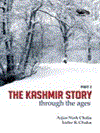

|
|
|
|
|
| Publication |
New Delhi, Vitasta Publishing Pvt Ltd, 2016.
|
| Description |
vii, 332p.hbk
|
| Series |
Part - II
|
| Standard Number |
9789382711759
|
|
|
|
|
|
|
|
|
|
|
|
Copies: C:1/I:0,R:0,Q:0
Circulation
| Accession# | Call# | Current Location | Status | Policy | Location |
| 058738 | 320.9546/CHA 058738 | Main | On Shelf | General | |
|
|
|
|
| 8 |
ID:
171127


|
|
|
|
|
| Summary/Abstract |
Along with other globalizing forces such as migration and proselytism, religious markets have played a key role in the transformation of religious practices in Armenia. This article focuses on the intersection of mobility and markets through mobile fairs, which are temporarily organized at shrines on pilgrimage days. Market vendors tend to travel from shrine to shrine across Armenia throughout the year, each following his or her own trajectory. In this article I examine how such markets are organized, how and by whom they are run and controlled, how small-scale mono-confessional markets become part of transnational globalization processes, and how the marketplace is embedded in the pilgrimage ritual, changing and modernizing its traditional meanings and structure.
|
|
|
|
|
|
|
|
|
|
|
|
|
|
|
|
| 9 |
ID:
096397


|
|
|
|
|
| Publication |
2010.
|
| Summary/Abstract |
As part of a course considering "American Democracy in Theory and Practice," we took 36 students to Rick Warren's Saddleback Church in Lake Forest, California. During that visit, students observed a community that seeks self-sufficiency and yet proves to be simultaneously responsive to and reflective of American democracy more broadly. Specifically, in a few short hours, they were able to see the virtues of civic association, the difficulty of respecting individualism in large-scale polities, the influence of regional identity, and the two-way interaction between politics and culture-all themes that featured prominently in our course. We offer this reflection to suggest the pedagogical benefits of showing the tensions of American politics in action and to encourage colleagues to consider integrating similar ventures into their own courses.
|
|
|
|
|
|
|
|
|
|
|
|
|
|
|
|
| 10 |
ID:
193013


|
|
|
|
|
| Summary/Abstract |
This article explores the everyday political economy of the Catholic World Youth Day in Panama, which was organized in January 2019. The aim is to shed more light on the relationship between the market and the religious sphere and, in particular, on the everyday experience of the WYD participants, and their encounters with the market and market practices. In doing so, the article challenges several commonly held assumptions, such as the priority of religious doctrine over everyday practices and the belief that the religious sphere is one-sidedly colonized by the market. Instead, the article shows that in this case, the interactions between the church and the market played out differently in three different areas – the discursive critique of the market by the Church leaders, the Church’s incorporation of market practices in its activities and the alliance between the local Catholic organizers and businesses. In the end, the complex interactions between the participants, businesses, discourses, spaces and technologies gave rise to a unique sacred-market network which blurred and at times entirely erased the difference between the religious sphere and the market.
|
|
|
|
|
|
|
|
|
|
|
|
|
|
|
|
| 11 |
ID:
179118


|
|
|
|
|
| Summary/Abstract |
This article analyses how the state in Senegal has managed the hajj since the liberalisation era in the early 2000s. Although the essence of the hajj is religious, it is also deeply political and requires that the state manages complex relations with pilgrims, religious leaders, private travel agencies, politicians and Saudi authorities. This article argues that three inter-related imperatives structure the conduct of the Senegalese state: a security imperative, a legitimation imperative, and a clientelistic imperative. Security concerns lead the state to monitor and control pilgrims travelling to Mecca. Legitimation is seen in the collaborative relations with Sûfi orders and in the framing of the hajj organisation as a ‘public service’. Finally, given the magnitude of financial and symbolic resources attached to the hajj, clientelistic relations are constitutive of state officials’ actions. Overall, despite the post-2000 liberalisation of the hajj, the state has maintained its role as a gatekeeper, regulator and supervisor.
|
|
|
|
|
|
|
|
|
|
|
|
|
|
|
|
| 12 |
ID:
082551
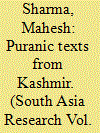

|
|
|
|
|
| Publication |
2008.
|
| Summary/Abstract |
Focusing on the western Himalayan provinces of Kashmir and Himachal Pradesh, this article argues that the Indian hagiographic texts of the Puranas should be understood as a nuanced literature that sought to effect a paradigm shift in liturgy and praxis, fusing polity and religion, largely in contravention to the earlier Vedic-Upanishadic texts and their commentaries, but also building on them. Emphasis on local Sanskrit literature, specifically the Nilamata Purana, which uses popular iconographies of river goddesses, served many centuries ago to reconstruct the geography of the area within the wider context of the subcontinental sacred geography.
Keeping within the Puranic tradition, the article focuses on the rituals and ceremonials associated with rivers, while also charting the process by which regional pilgrim centres were formed on their banks, devising a sacred space parallel to the subcontinental cosmos. This reinforces the logic of the sacred river, the worshipped deity, as a process by which brahmanic dominance was asserted in the peripheral areas of early India, or ideologically and politically contested regions such as Kashmir. In the sacrality of the river Vitasta, Brahmanism as an ideology reasserts itself by restating the tradition in relation to its sacral past, creating a new sacred space and devising a sacred icon to reclaim this particular geography for the devout Brahmanas
|
|
|
|
|
|
|
|
|
|
|
|
|
|
|
|
| 13 |
ID:
144725


|
|
|
|
|
| Summary/Abstract |
“The politic” and “the religious” have had many relations with each other in Iranian history and in some cases “the religious” has been defined in a situation beyond the extent of the political power. A case in point is the right of taking sanctuary in Shi‘ite shrines. Throughout Iran's history, subjects could take refuge in Shi‘ite shrines and some other places related to religious and non-religious authorities. Persecution was delayed or the individual was forgiven, though sometimes they were sentenced when exiting the shrine. By referring to religious texts that have reinforced that tradition, this article seeks to trace continuities between early Islam and modern Iran. It focuses on sanctuary taking and sit-ins at shrines and tombs, and on the interplay between those actions and political power, and discusses the changing mobility and dynamisms of those actions at different periods of Iranian history.
|
|
|
|
|
|
|
|
|
|
|
|
|
|
|
|
| 14 |
ID:
109000
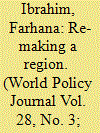

|
|
|
|
|
| Publication |
2011.
|
| Summary/Abstract |
Ethnographic research conducted among the semi-nomadic Muslim Jatts, who inhabit the interstices of the contemporary State both discursively as well as physically, helps us to critically interrogate the formulation of region as articulated both by the modern nation-state as well as contemporary religious ideology. In the official discourse of Gujarat State, the Jatts are represented as threats to the territorial integrity of the nation-state in general and to Gujarat in particular, their cross-border movements into Pakistan designed to destabilise the region. An ethnographic analysis of the state shows how state ideologies are produced discursively over time. This paper argues that travel and trade links in this region have produced historically-blurred boundaries between region, religion and now nation. These histories productively re-configure the current geopolitical iteration of space and belonging in contemporary Gujarat as enunciated by the state.
|
|
|
|
|
|
|
|
|
|
|
|
|
|
|
|
| 15 |
ID:
132269
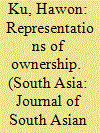

|
|
|
|
|
| Publication |
2014.
|
| Summary/Abstract |
This article explains the changes found in patas (cloth paintings) depicting Shatrunjaya, which were produced for Shvetambara Murtipujak Jains during the nineteenth century in Gujarat. These patas differed from earlier tirtha patas in that they were much larger and depicted Shatrunjaya as the central subject matter. They were also meticulous in depicting the topographical and architectural features of the site, and included Palitana, the adjacent town ruled by the Hindu Thakur. The emergence of the site as a centre for Jain pilgrimage, as well as changes in Jain perceptions of the site, led to these transformations
|
|
|
|
|
|
|
|
|
|
|
|
|
|
|
|
| 16 |
ID:
126168


|
|
|
|
|
| Publication |
2013.
|
| Summary/Abstract |
The transformation of 'guru devotion' centres as pilgrimage destinations is a growing phenomenon in contemporary Indian religious practice. In this study, we consider how the town of Shirdi, in Maharashtra, is undergoing rapid transformation as it emerges as a religious tourism destination at the epicentre of the global Sai Baba movement. Since the 1918 death of Sai Baba, a Maharashtrian saint, Shirdi has grown from a rural hamlet to a bustling town with some thirty thousand permanent residents and an estimated annual influx of eight million short-term visitors. Focusing on Shirdi as a centre of guru devotion, we examine how socio-spatial transformations have created a new mosaic of regional pluralism at the site. While the coexistence of different communities is one of the hallmarks of religious pluralism in India, we argue that the complementary compartmentalisation of co-religionists hailing from different regions is a significant outcome of rapid urbanisation at pilgrimage sites, particularly those associated with guru devotion.
|
|
|
|
|
|
|
|
|
|
|
|
|
|
|
|
| 17 |
ID:
128878


|
|
|
|
|
| Publication |
2014.
|
| Summary/Abstract |
This article, partly based on fieldwork with the Saibaba Sansthan of Shirdi, examines the complex interplay of syncretism, pilgrimage and associated Hinduisation which contributes to the contemporary countenance of the Sansthan, its recreation and recasting of Saibaba memories and the transposing of Shirdi social geographies. Through syncretism and pilgrimage, eventually usurped by the dominant Hindu majoritarian lens, Saibaba devotionalism complements the contemporary theoretical work on 'lived religion'. The Sansthan traditions not only supply relevant doctrines, narratives and belief systems but also embodied technologies through which the moral subjectivities of Saibaba devotees can be transformed. Akin to Bourdieu's concepts of practice and habitus, the Sansthan's doctrines shape the moral and faith-oriented selves of devotees while working towards a kind of holism wherein the goal is not solely individual spiritual enhancement but much more.
|
|
|
|
|
|
|
|
|
|
|
|
|
|
|
|
| 18 |
ID:
177589
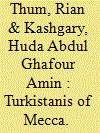

|
|
|
|
|
| Summary/Abstract |
This article presents a case study of one family’s exile from the Tarim Basin, where the relatives they left behind are now known as ‘Uyghurs,’ to the Mecca region, where the exiles regard themselves as ‘Turkistanis.’ This case is then examined in the context of other exilic families’ oral histories and narrative strategies to show an ongoing process of Turkistani identity formation and history production that seeks to accommodate personal and community histories of varied vintages and origins. Localized histories of early exiles mix with nationalist histories brought by later arrivals; family documents rub elbows with a hagiographical novel; and Turkistanis who see their community as unitary confront more recent ideas that some families are ‘Uyghurs’ and some are ‘Uzbeks.’ Together these form an eclectic whole that addresses the unusual position of a people who have been exiled from a place that much of the world views as a periphery to one that they themselves view as center.
|
|
|
|
|
|
|
|
|
|
|
|
|
|
|
|
| 19 |
ID:
143313
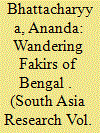

|
|
|
|
|
| Summary/Abstract |
The historiography of the Fakir rebellion has drawn much attention since Ghosh in 1930 depicted the Fakirs as raiders from outside Bengal. In independent India, two groups of ideology-driven historians, Marxists and Secularists, expounded the uprising as an early peasant rebellion and a shining example of Hindu–Muslim campaign against the Raj. This article explodes both scholarly myths, since its archival research reconfirms that the Fakirs were increasingly aggressive plunderers in religious garb, tormenting the Bengal countryside. Mainly based on colonial records, later parts of this article illustrate how and why the British felt increasingly compelled to curtail Fakir movements and activities.
|
|
|
|
|
|
|
|
|
|
|
|
|
|
|
|
|
|
|
|
|